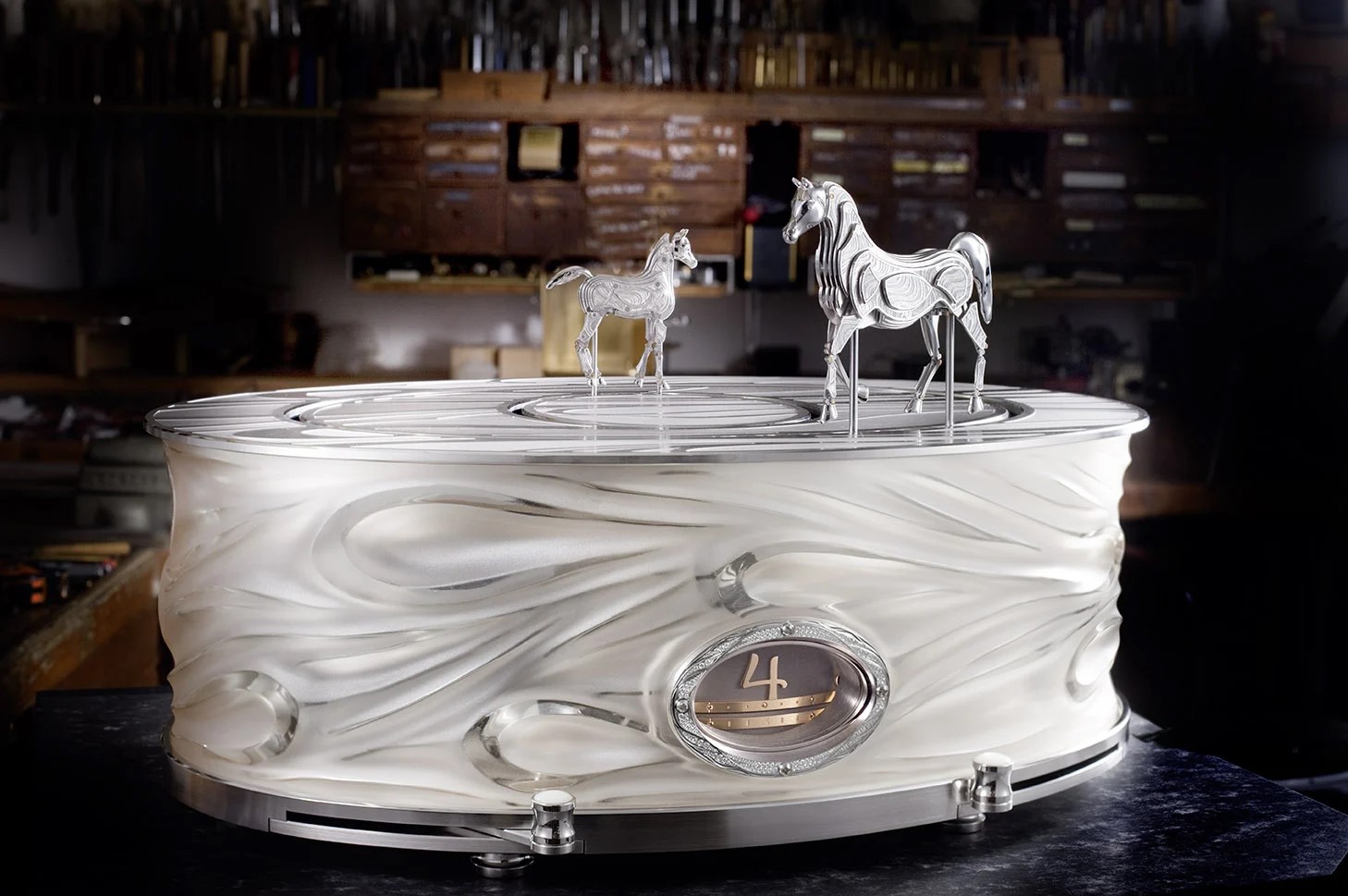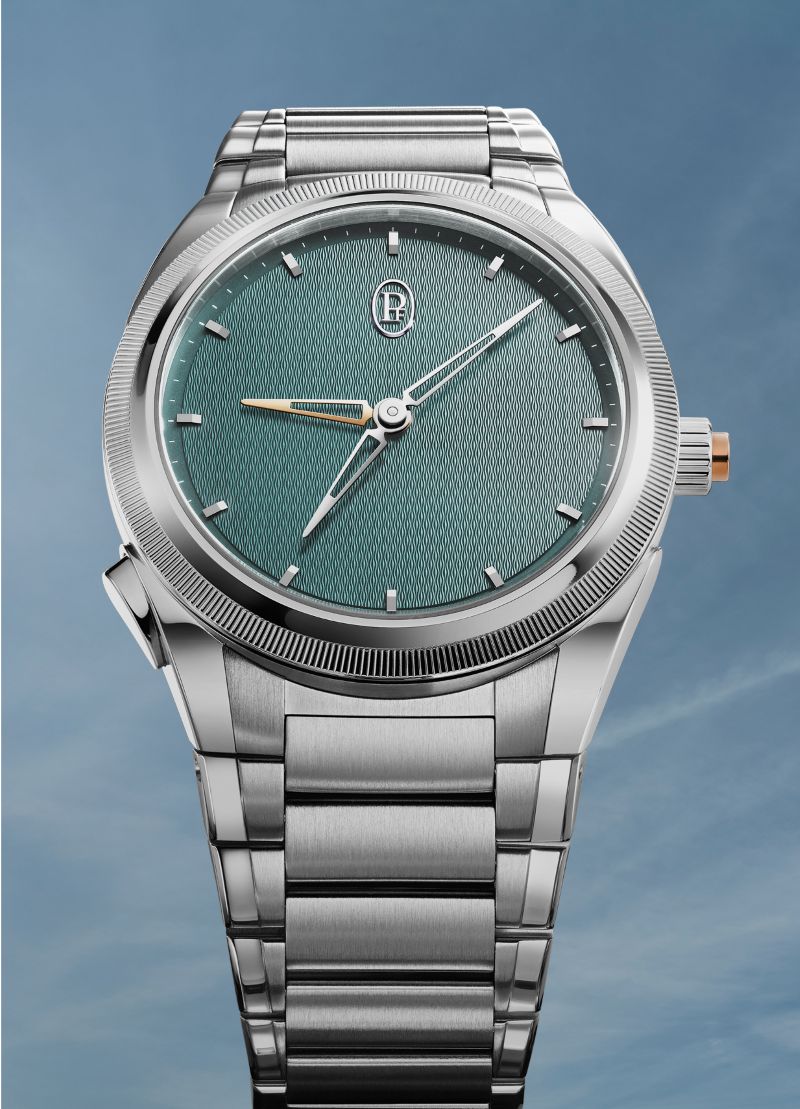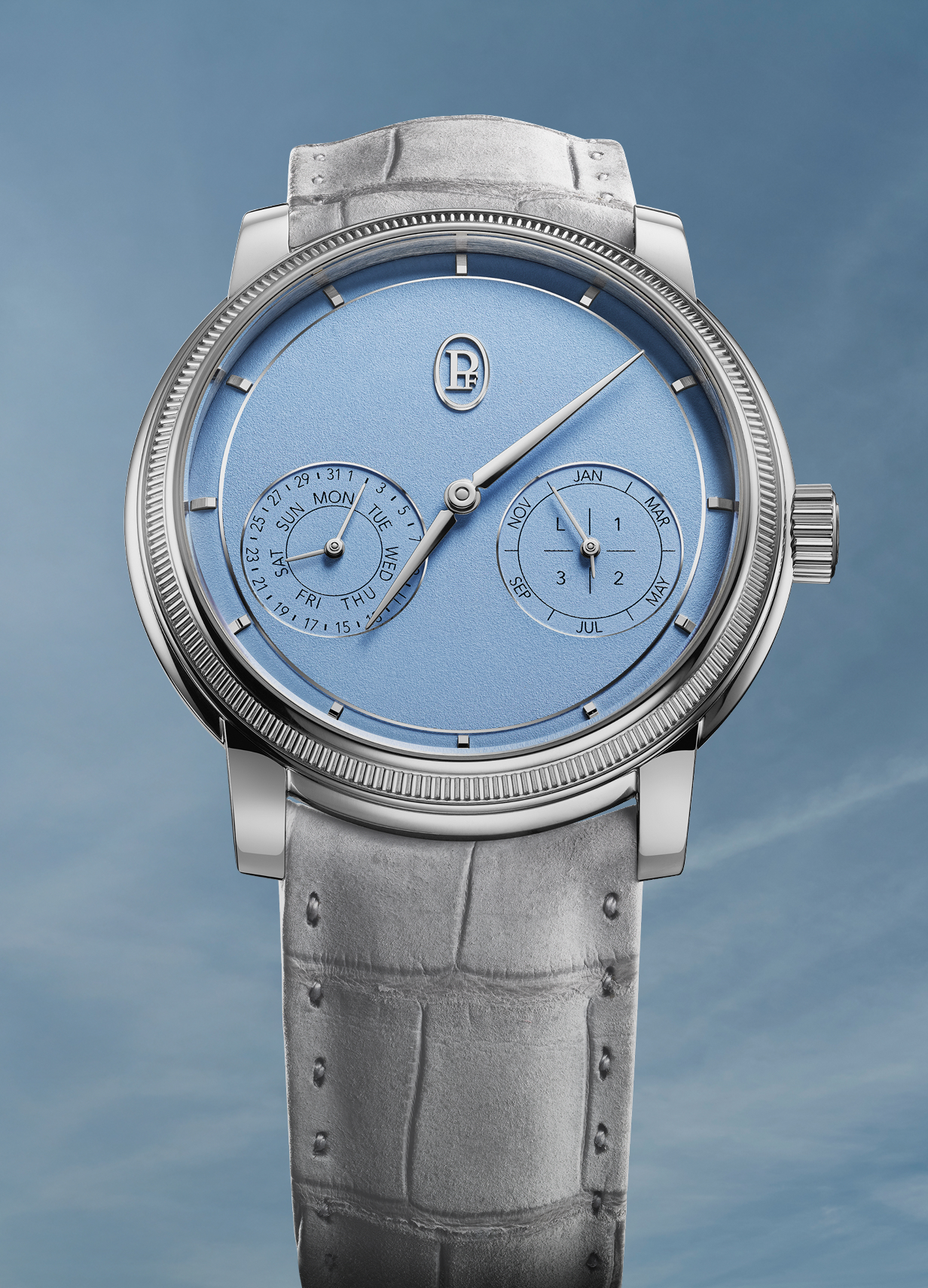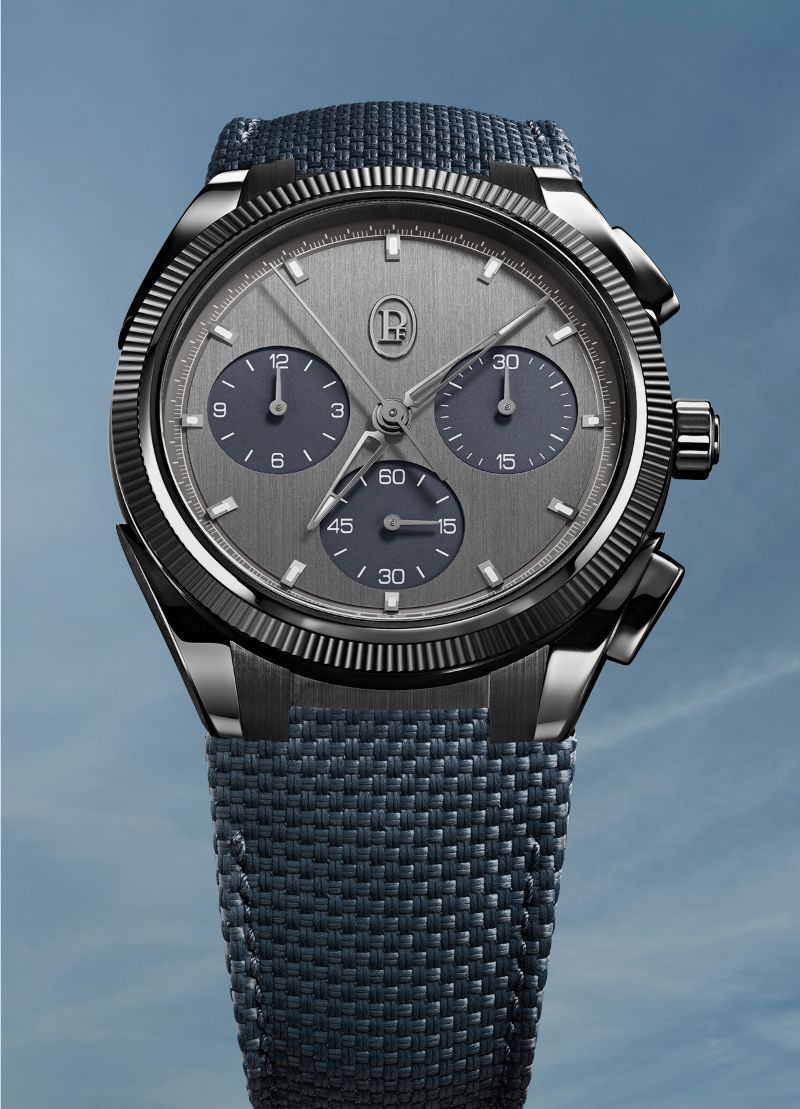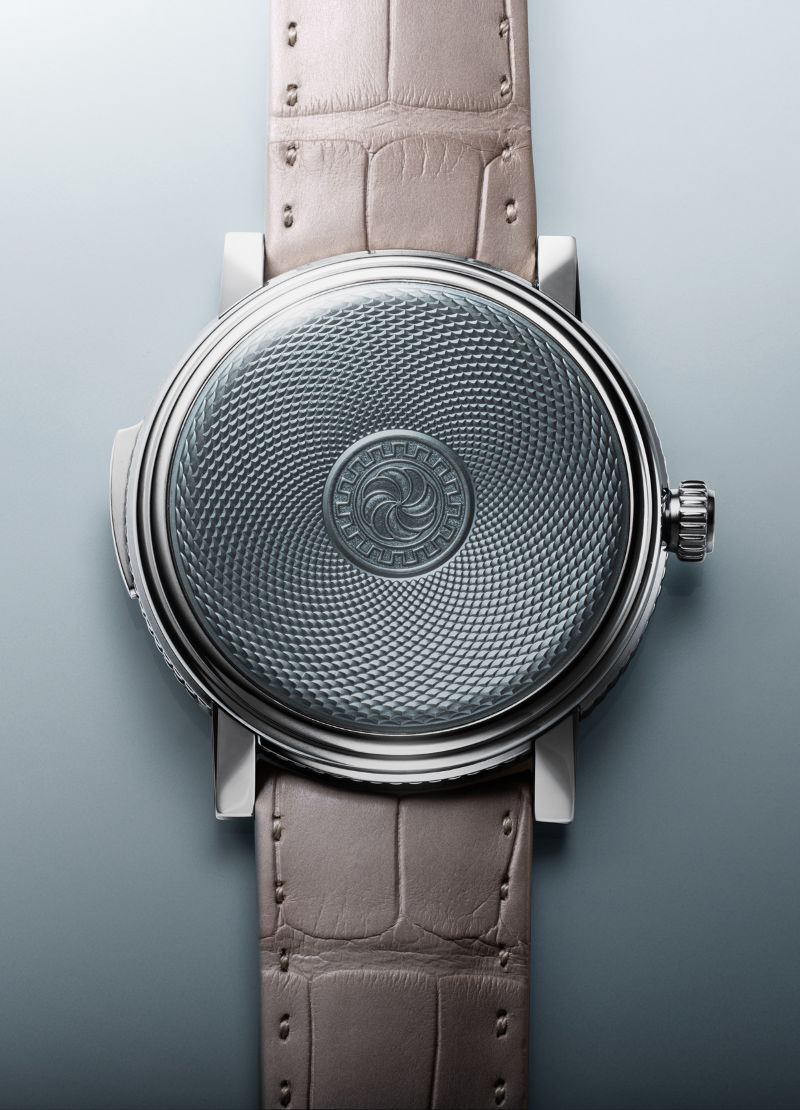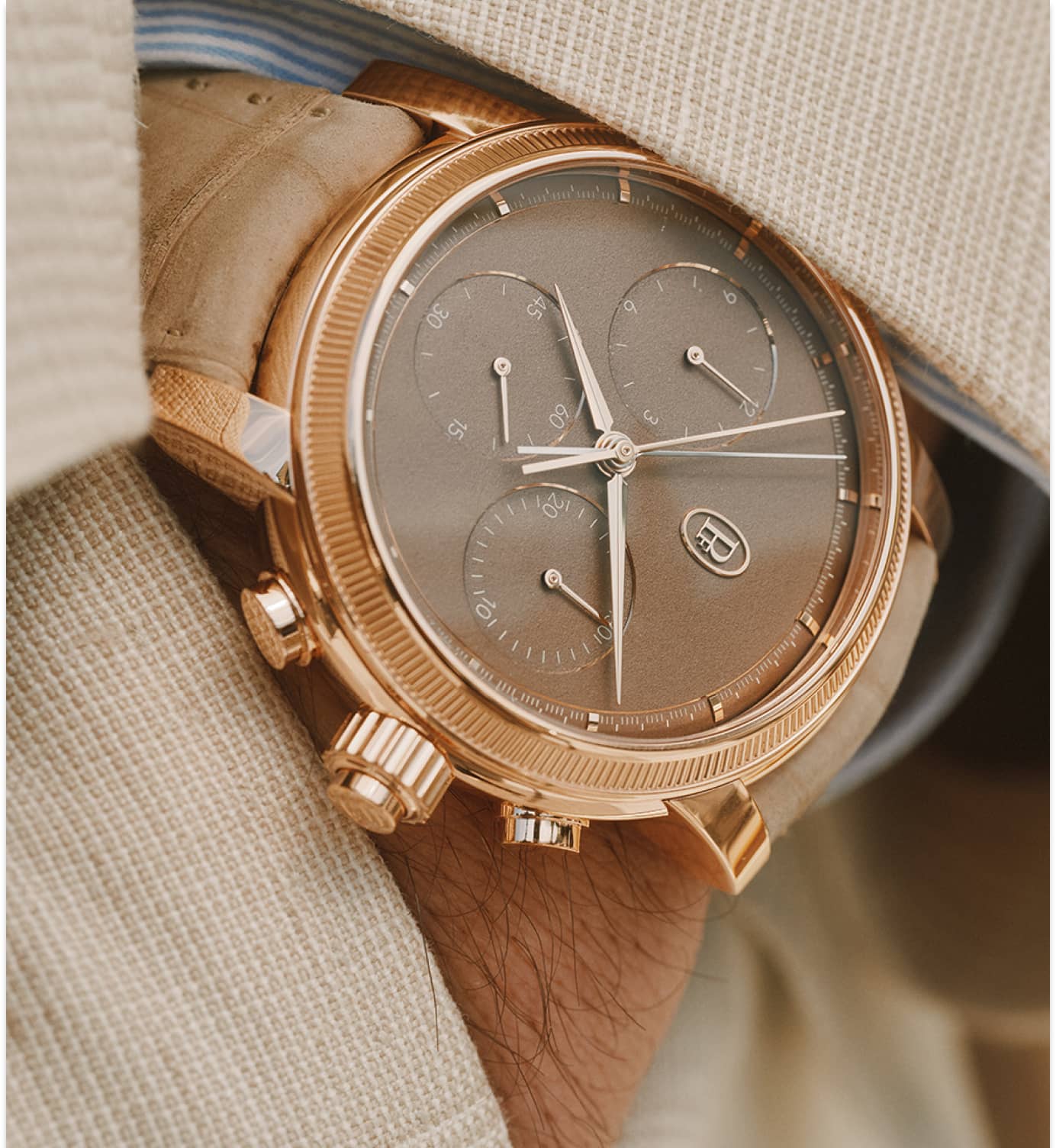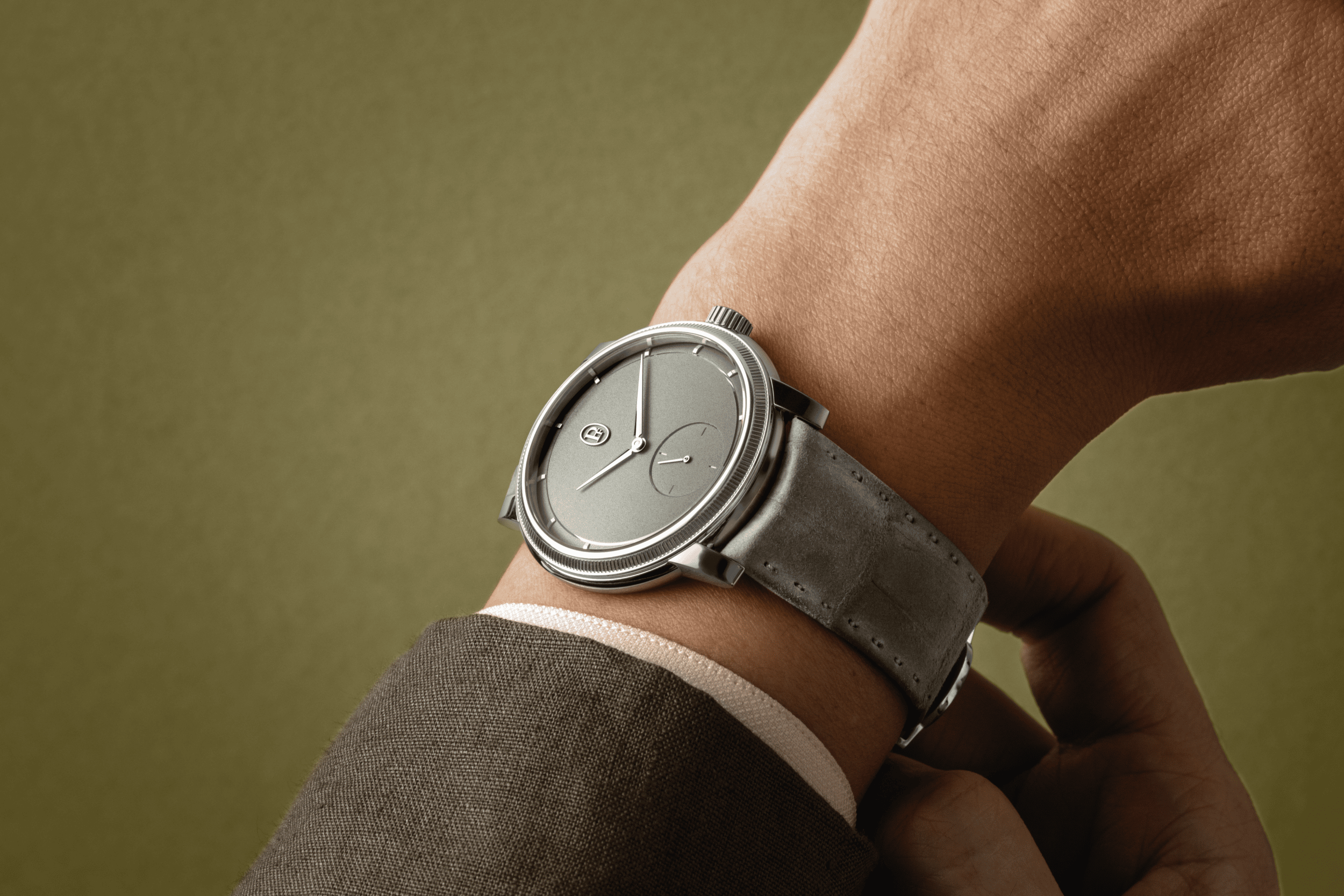The story of a man devoted to the beauty of horology, with humility and utmost respect.
By Pascal Brandt for Monochrome Watches
October 6, 2023
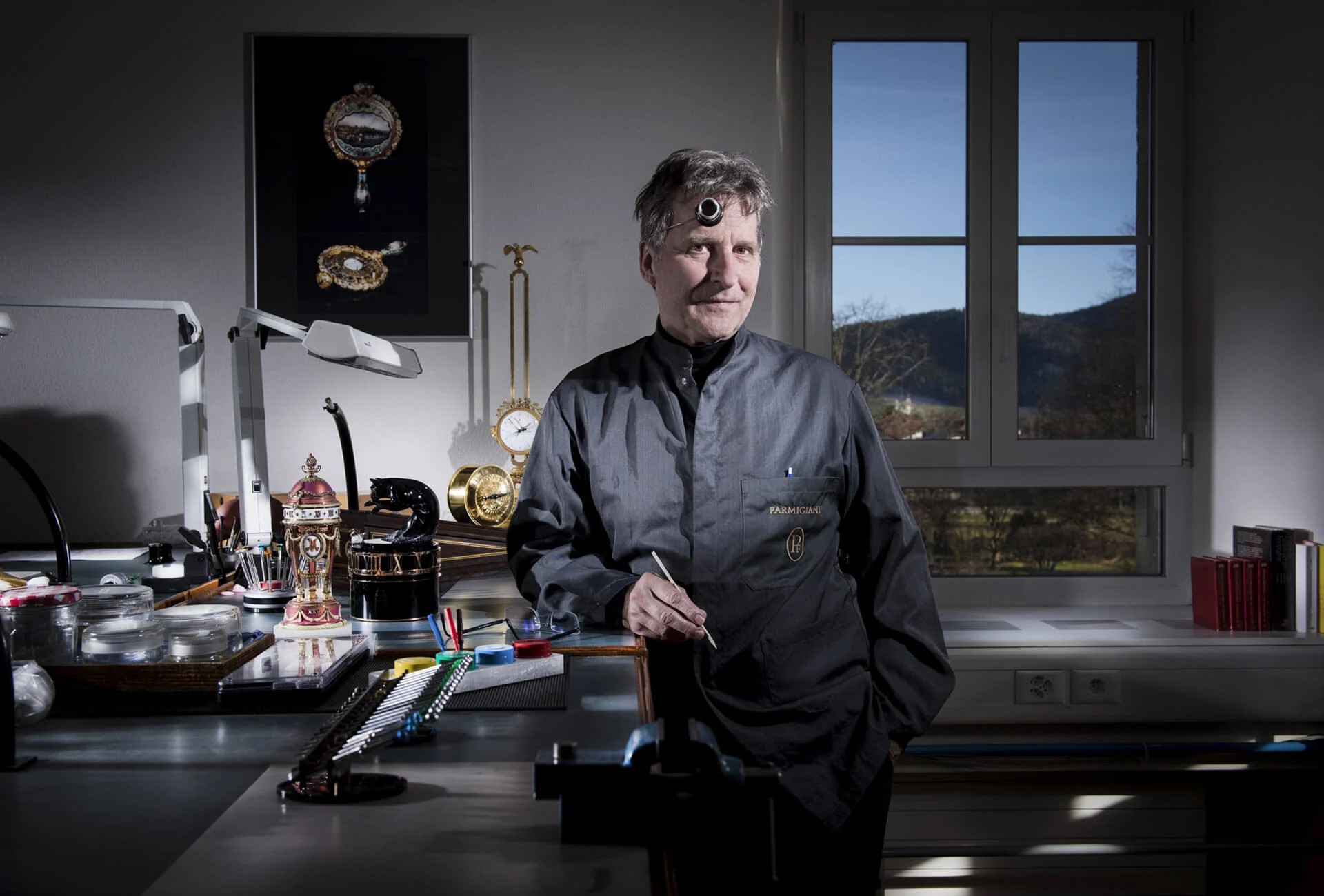
Just mention his name, and you will have the undivided attention of collectors and enlightened watch enthusiasts worldwide. Michel Parmigiani is considered a legend in watchmaking culture, and rightfully so. A personality marked by discretion, he has devoted his life to watchmaking and is renowned universally for his unparalleled expertise in the restoration of antique clocks. He is also the mastermind of some of the most unique table clocks and movements that have entered the annals of watchmaking history.

Michel Parmigiani is naturally curious, taking in the world around him to nourish his creations. Nature, architecture, history and even mathematical formulas can stimulate his inspiration. In his words: “In restoration, you cannot unleash your dreams; this is why I nurtured a wide range of interests over the years.” Today, we look back at a life dedicated to measuring time.
A 360-degree repertoire
Exceptional pieces, patents and innovative calibres mark Michel Parmigiani’s career. Wristwatches, of course, but also pocket watches, table clocks and unique animated pieces (automata). His 360-degree repertoire is vast and doubtless unmatched in the watchmaking history of recent decades.
After the Fleurier Watchmaking School, Michel Parmigiani went to the Technicum in La Chaux-de-Fonds and then to the school in Le Locle. From 1963 to 1971, he dabbled in every aspect of the profession, including watchmaking. “At the time, I worked with logarithmic tables for all calculations. There were no computers.” He then joined Juvenia’s quality control department to address “a widespread problem at the time in watchmaking, following the arrival of quartz. No one believed in the future of the mechanical watch anymore.”
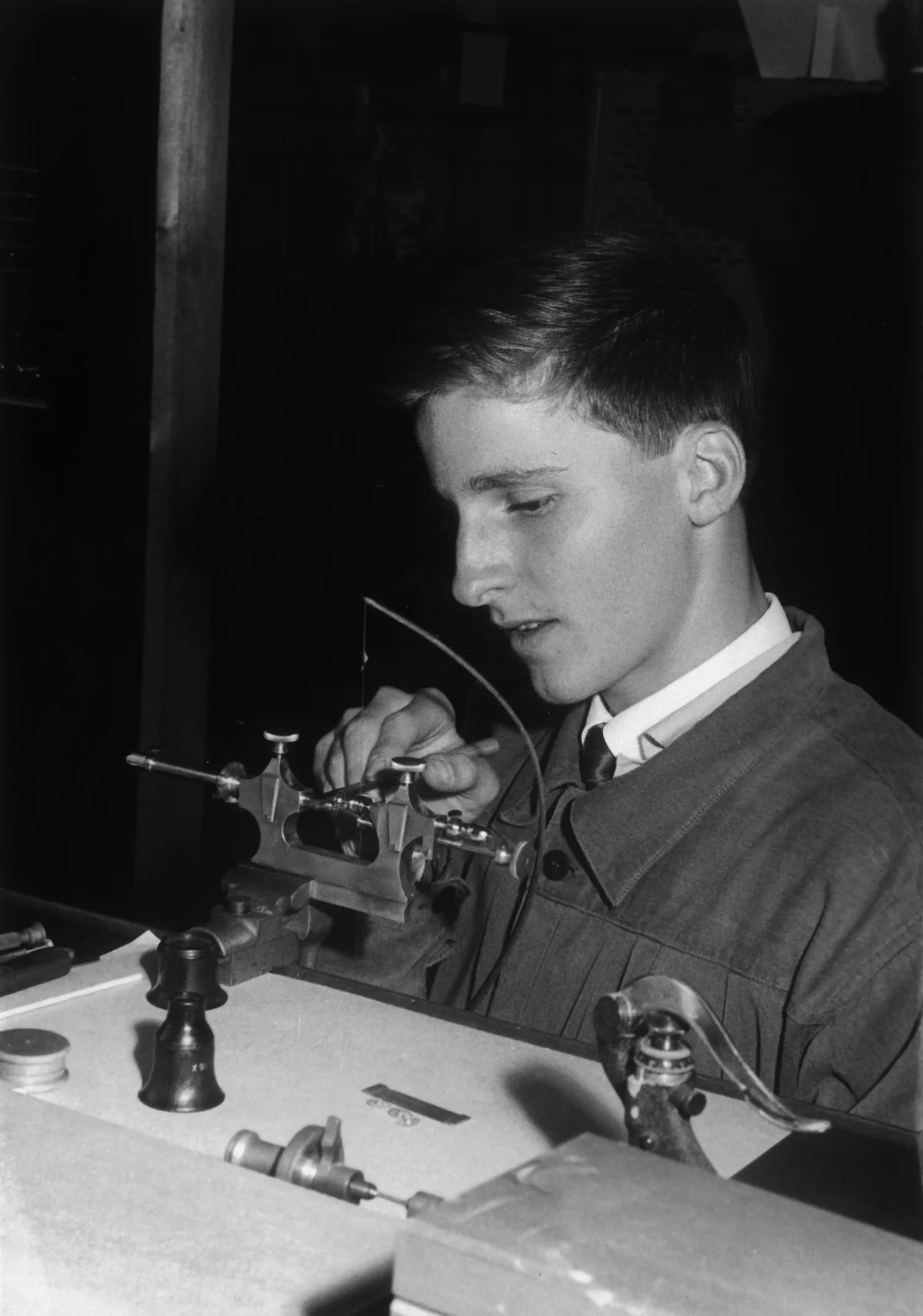
Dealing with and resolving issues related to quality is all fair and well, but when you have ideas and desires, it’s not enough. And so, in 1975, Michel Parmigiani decided to set out on his own, “the same year as the creation of the International Watchmaking Museum (MIH) in La Chaux-de-Fonds,” he notes mischievously. The company “Michel Parmigiani Watchmaker-Builder and Restorer” was created (in 1990, it became “Parmigiani Mesure et Art du Temps”).
His multiple talents and expertise led to his appointment as an adjudicator in restoration exams and a role at the Institut l’Homme et le Temps under the leadership of Pierre Imhof. During these years, he gave free rein to his desire to create: “I started developing modular perpetual calendars. Everything was made with a file and a saw; electrical discharge machining that we know today did not exist! The components were stamped and then finished by hand.”
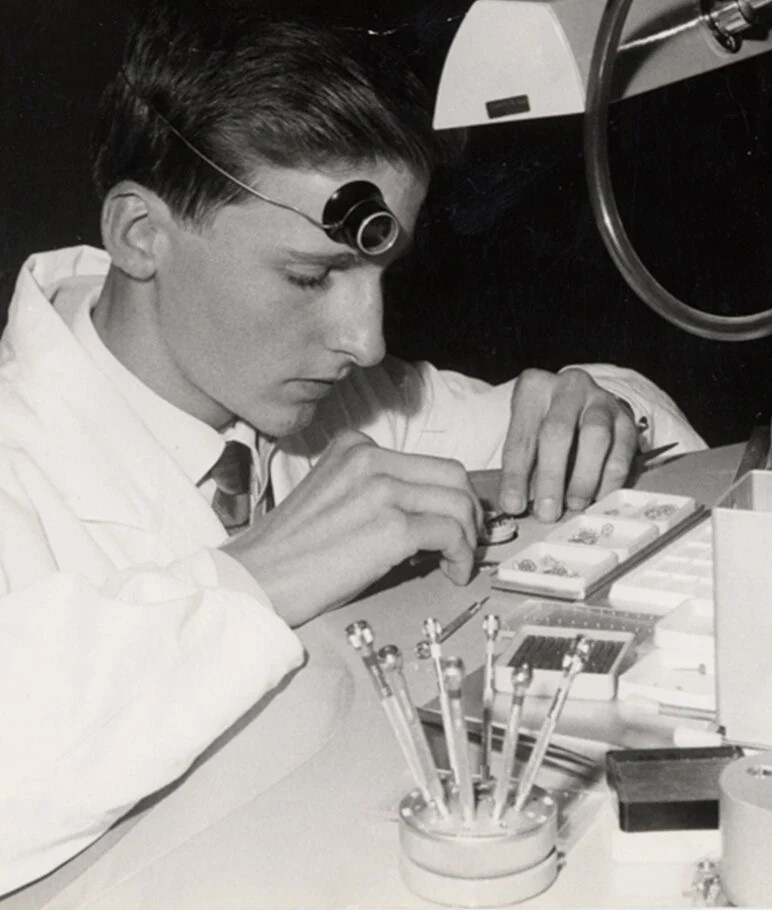
Simultaneously, Michel Parmigiani also worked on larger pieces. His signature, for example, features on a constant force table clock for the King of Morocco. It was, he explains, “the type of work where I had to manufacture absolutely all the components” at a time when the concept of industrialisation was still in its infancy.
Decisive Meeting
And then, in 1980, a decisive meeting took place, marking a turning point in Michel Parmigiani’s trajectory. “I was approached by Madame Nicole Landolt-Sandoz, who asked me if I could take care of the Sandoz family collection.”
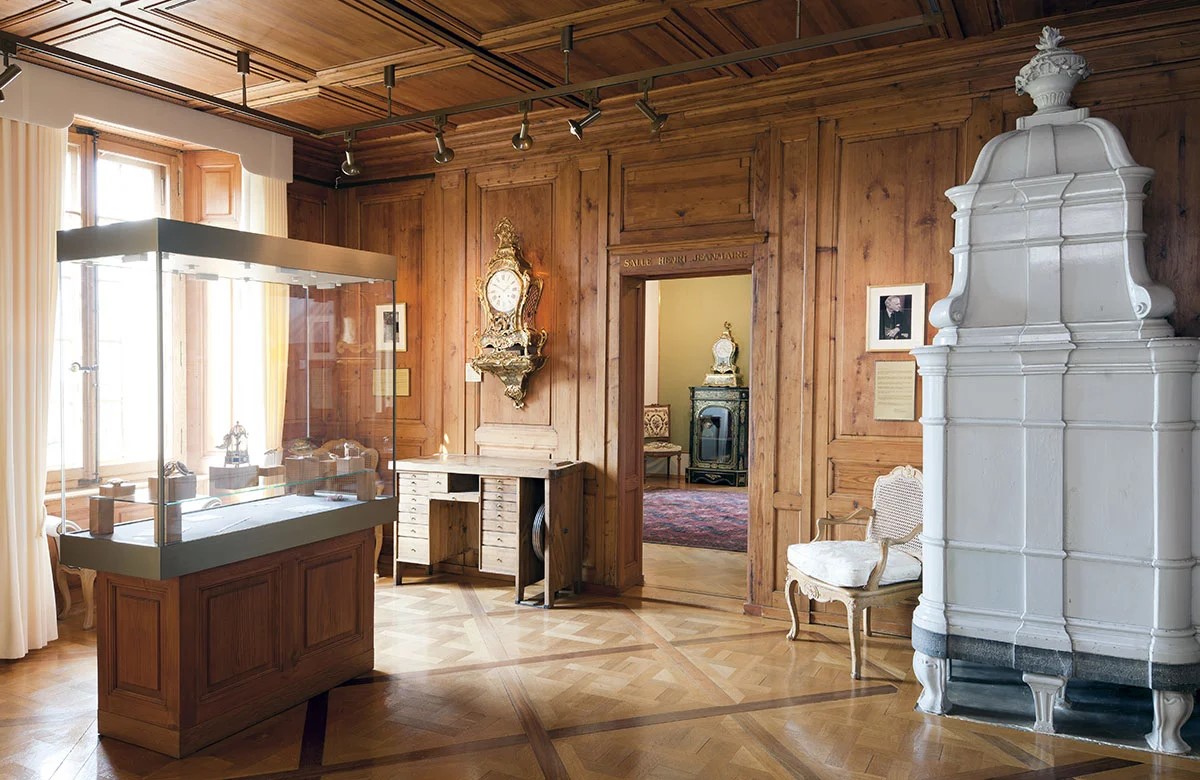
This exceptional private collection, perhaps one of the most important in the world, contains pieces dating from the Renaissance to the 19th century. Home to extremely rare pieces, the Sandoz Collection has veritable milestones in the art of watchmaking, be they pocket watches, table clocks or automata: a unique compendium of micro-mechanical engineering and decorative arts.

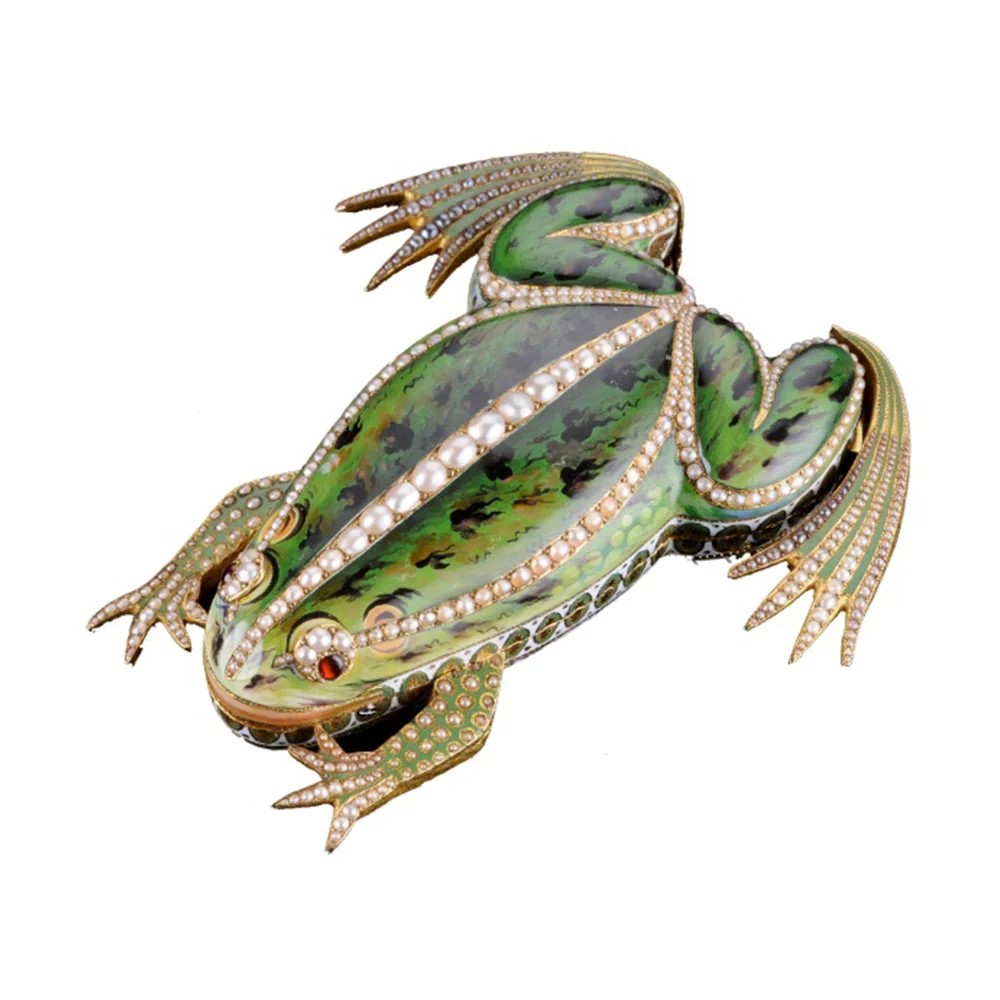
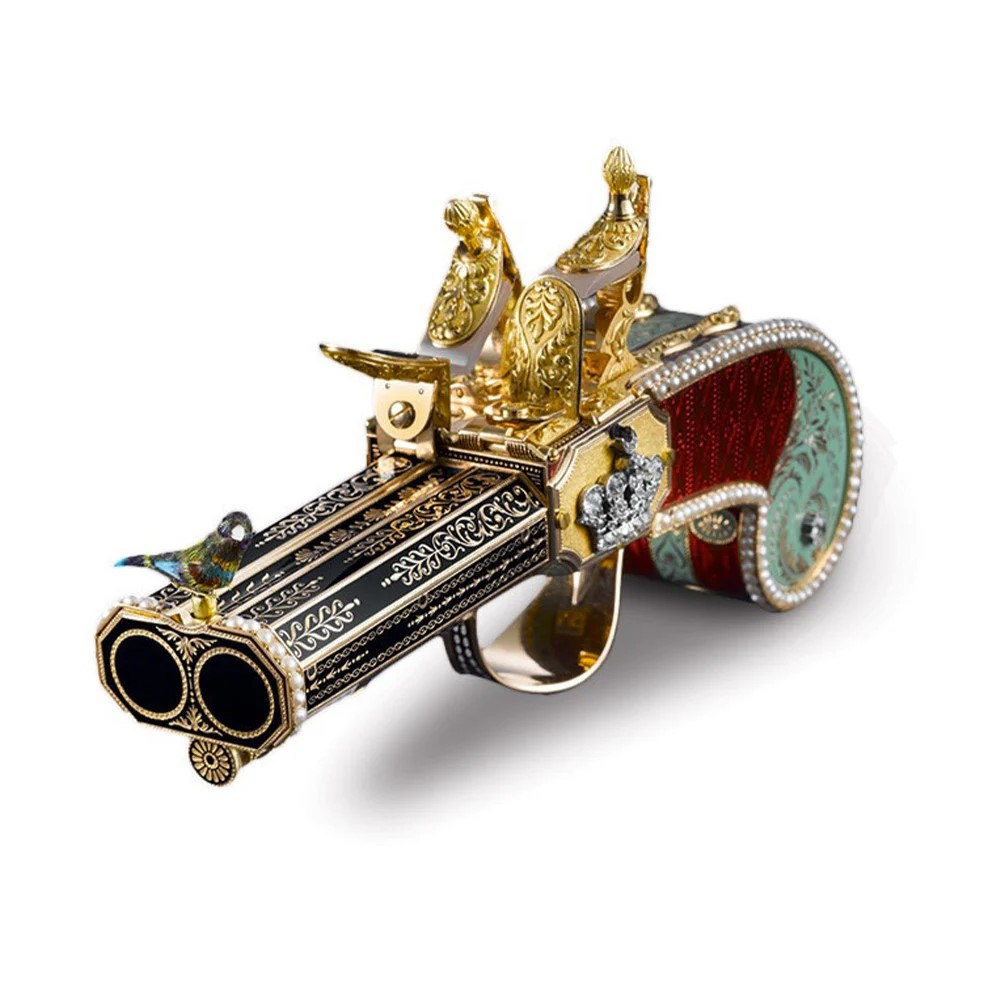
How could he refuse to bring these wonders back to life? This pivotal encounter marked the starting point of a new direction in his career and the consolidation of an immense treasure trove of knowledge. In addition to creating complicated watches, Michel Parmigiani gradually forged an international reputation as a restorer of timepieces, regardless of their format or age. Even today, the Restoration Workshop is considered one of the most advanced in the world, receiving pieces from public and private collections. Among his achievements, among others, is the restoration of the historical collection of watches at the Patek Philippe Museum and the Château des Monts in Le Locle, reinforcing his growing reputation as a leading watchmaker and restorer.
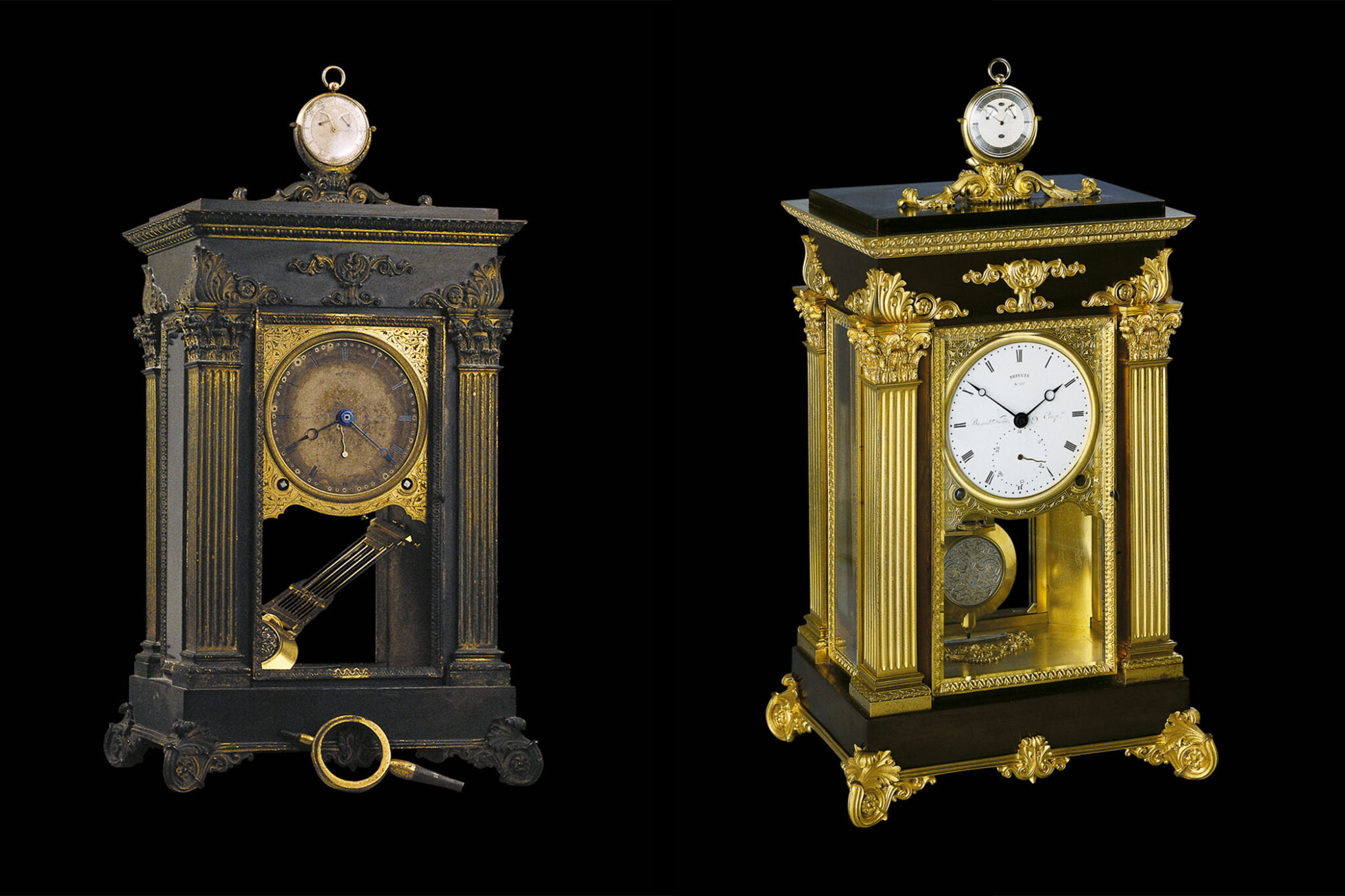
Until the launch of his eponymous brand, Michel Parmigiani wore two hats: the first as the restorer of pieces from the Sandoz collection and the second creating watches for third parties. He developed, for example, complicated pocket watch calibres and table clocks for his prestigious clients, Chaumet, Vacheron Constantin and especially Breguet (then owner of Chaumet). For Breguet, he produced an extra-thin perpetual calendar, followed by an automatic pocket watch calibre in 1990 and restored an antique Sympathetique Breguet clock.
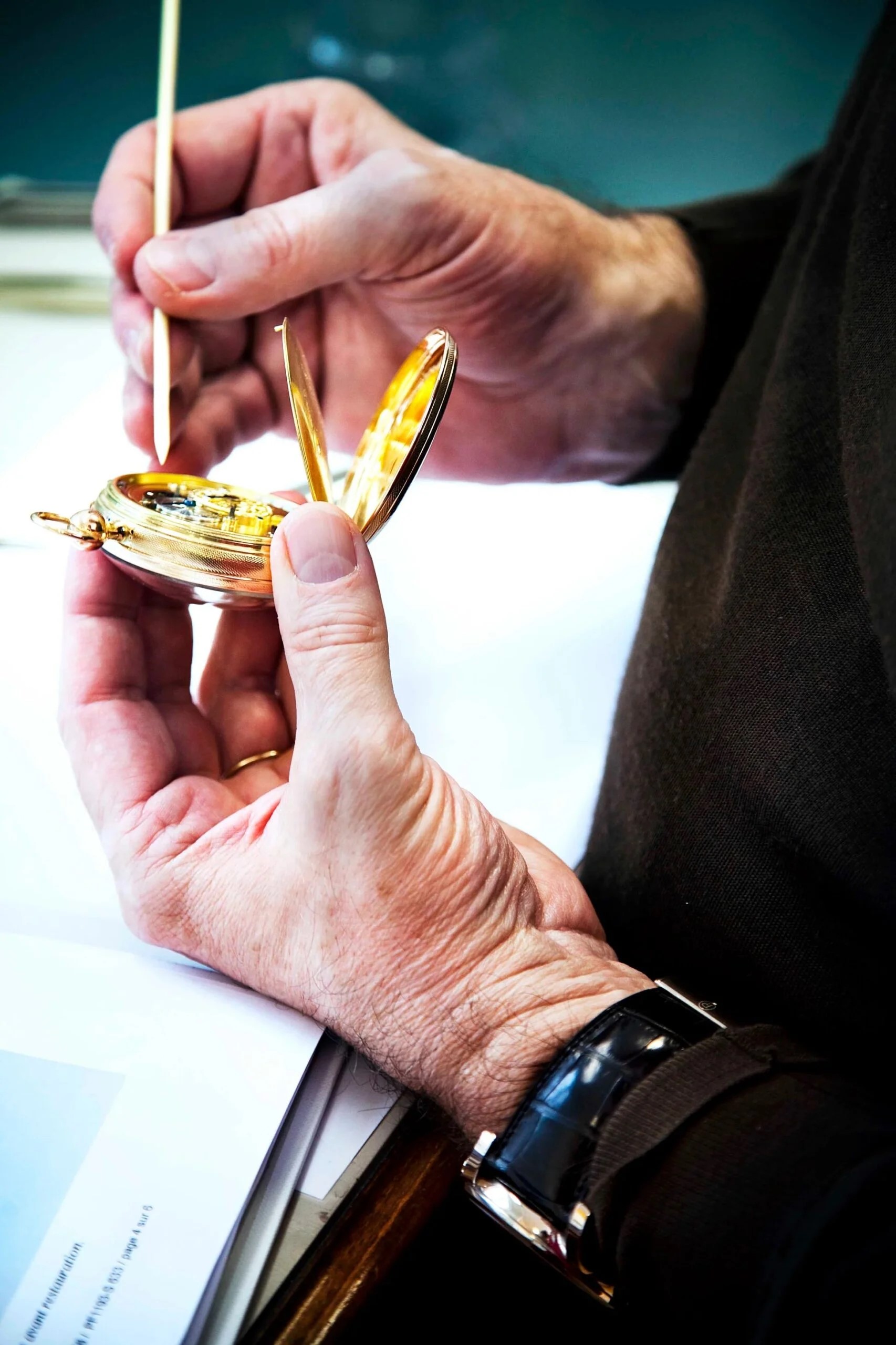
The brand bearing the name of the most famous watchmaker is constantly present in the work of Michel Parmigiani. In 1993, he filed a patent for a perpetual lunar calendar in clock format: the Muslim Hegirian calendar. “I like calendars because they reflect the history of civilisations; they are a part of our human history.” His interest in this complication has never waned and was manifested at Parmigiani Fleurier in wristwatch format with the Hijri Calendar, the Gregorian Perpetual and Annual Calendar, and the Complete Chinese Calendar launched in 2023. Piaget also approached Michel Parmigiani to produce a high-jewellery pocket watch for the brand’s 120th-anniversary jubilee in 1994.
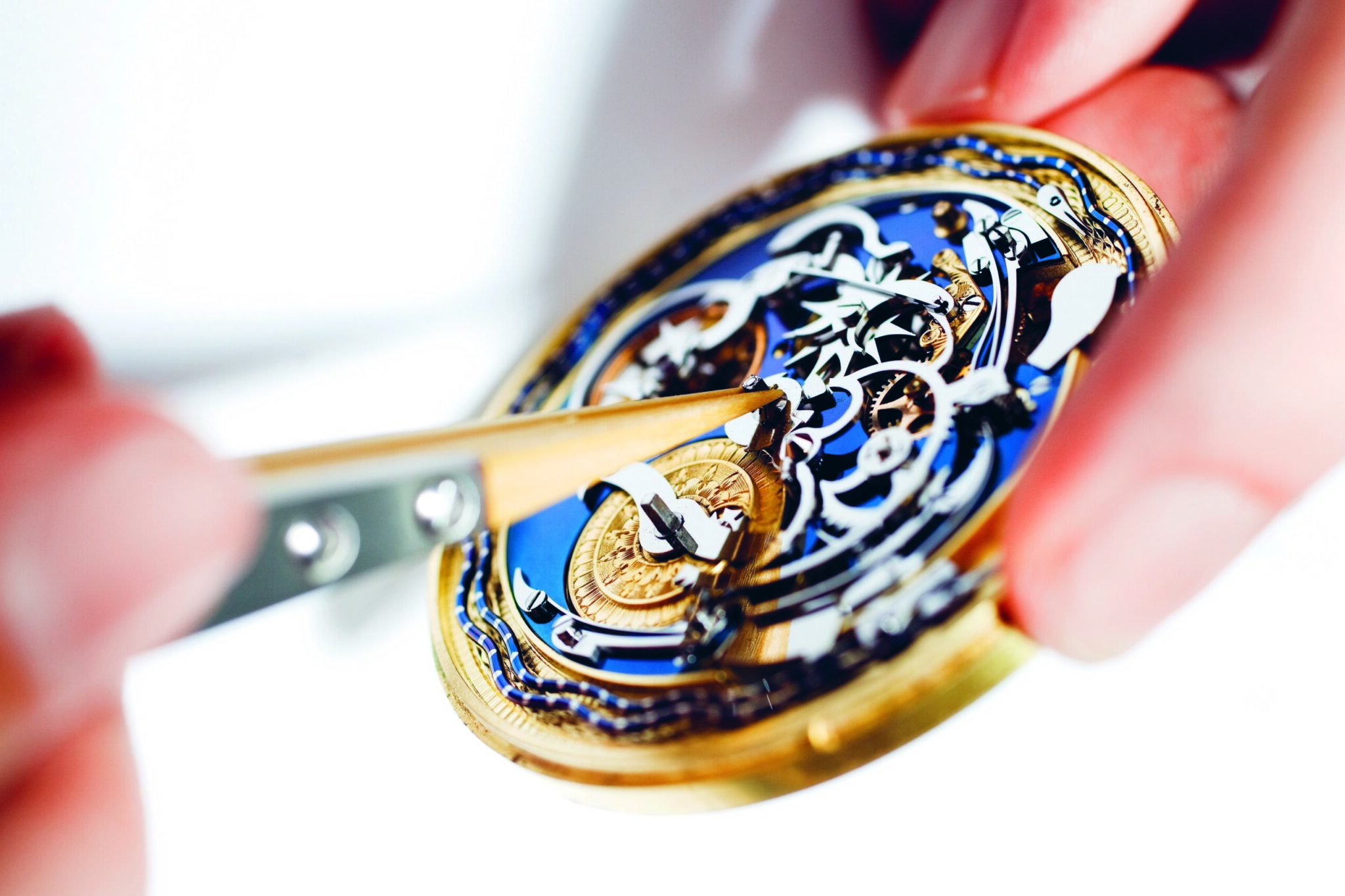
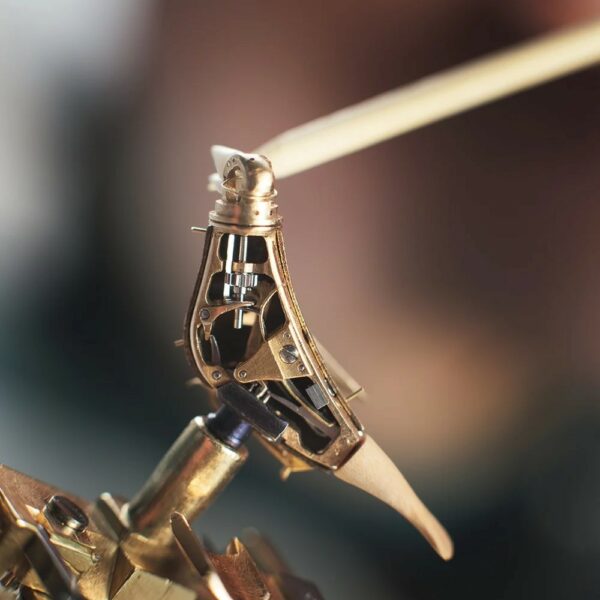
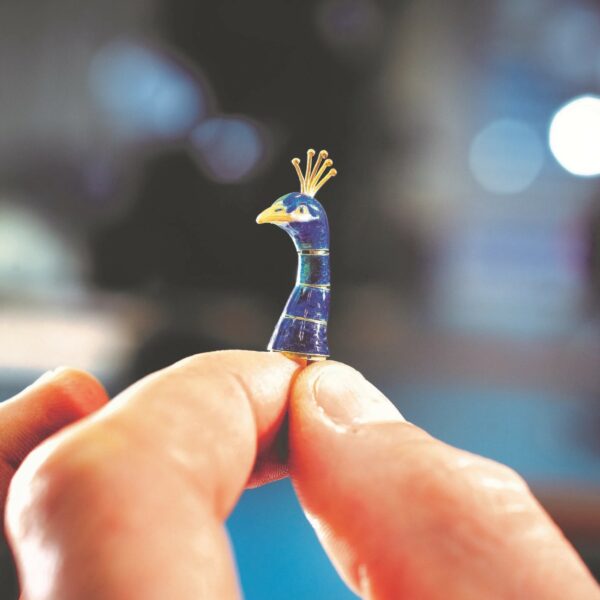
The Beginnings of LUC Chopard: ASP 94 Project
Another key date in Michel Parmigiani’s trajectory was 1994, when Karl-Friedrich Scheufele of Chopard commissioned the development of an automatic double-barrel movement for the brand, at that time established in Meyrin, Geneva. “They came to me because they wanted to work with an independent manufacturer in complete confidentiality. I accepted, which is how the ASP 94 (Association Scheufele Parmigiani) project was born.“
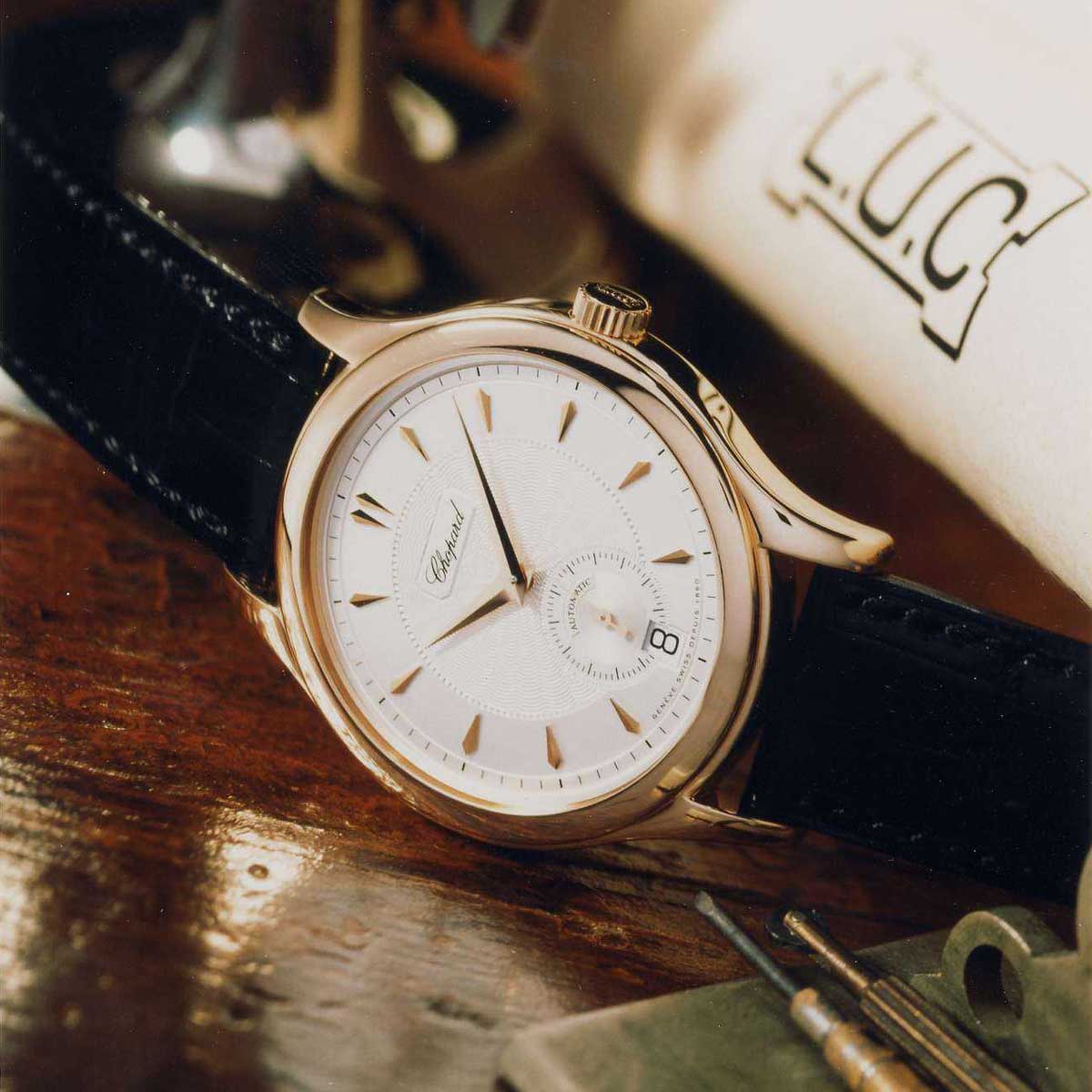
Following the collaboration, “I suggested to Chopard that they settle in Val-de Travers, in Fleurier, and establish their own manufacture“. His advice was taken, and Chopard inaugurated the L.U.C (for Louis-Ulysse Chopard) manufacture in 1996, becoming the heart of all movement developments carried out by Chopard since then. The connection with Chopard thrived and led to the establishment of the Fleurier Quality Seal in 2002, the most demanding distinction in watchmaking quality certification.
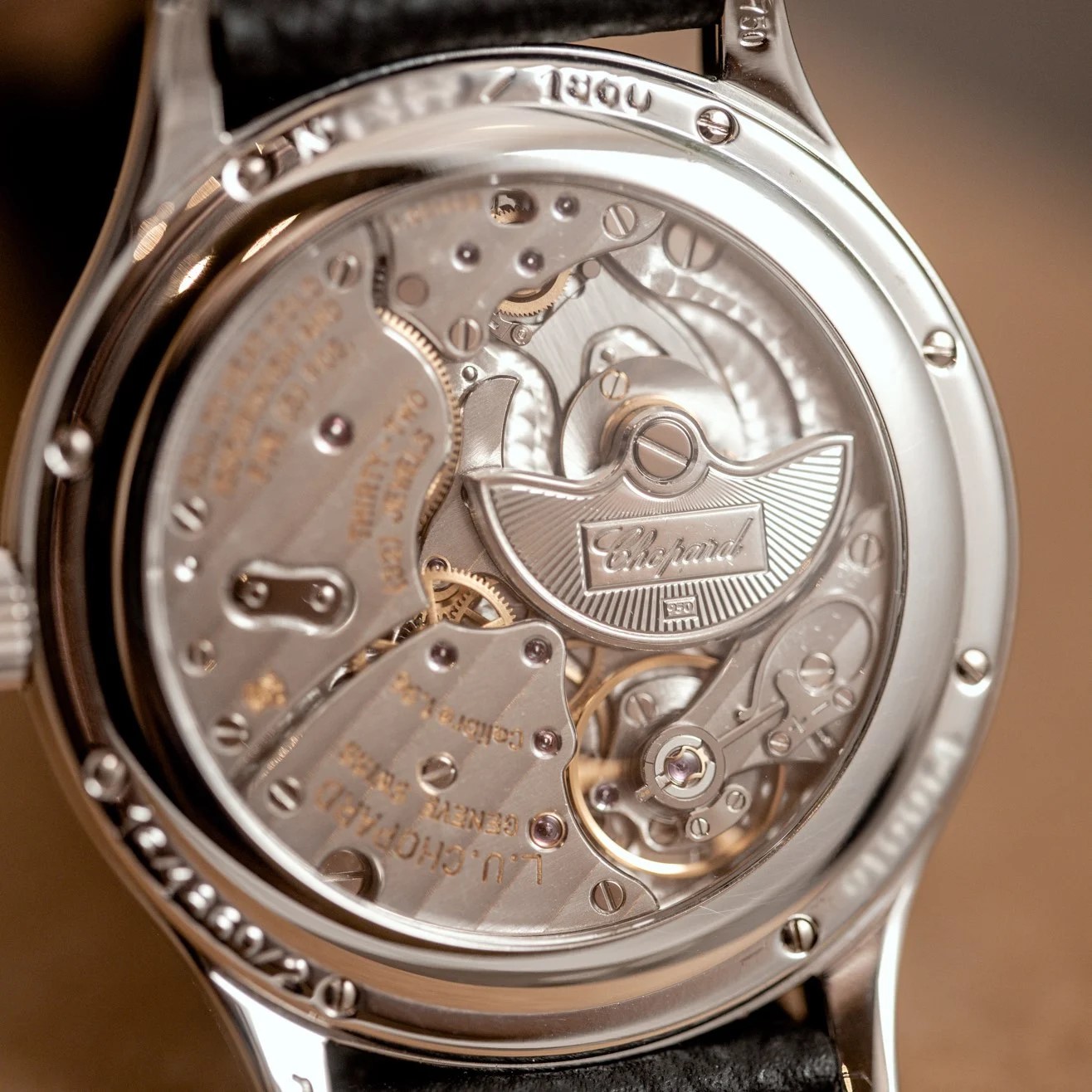
The talented jack-of-all-trades then addressed a concern endemic to mechanical watchmaking: magnetism, which influences the running precision of the watch. Michel Parmigiani teamed up with Anthony Randall, his British peer who was working on table clocks and complicated pocket pieces at the time.
The Search for the Grail
How to counter magnetism? One of Michel Parmigiani’s solutions was a glass spiral. “It’s fascinating because we too often ignore that glass is flexible.” While the solution was not entirely new (English watchmakers in the 19th century had used a glass balance spring), “the experience was extremely enriching.” The subject of isochronism didn’t end there, though, and he experimented with a zirconium hairspring; it was unsuccessful. Nevertheless, “these projects opened my mind to different ways of thinking about technological development. It was a bit like the search for the Grail!”
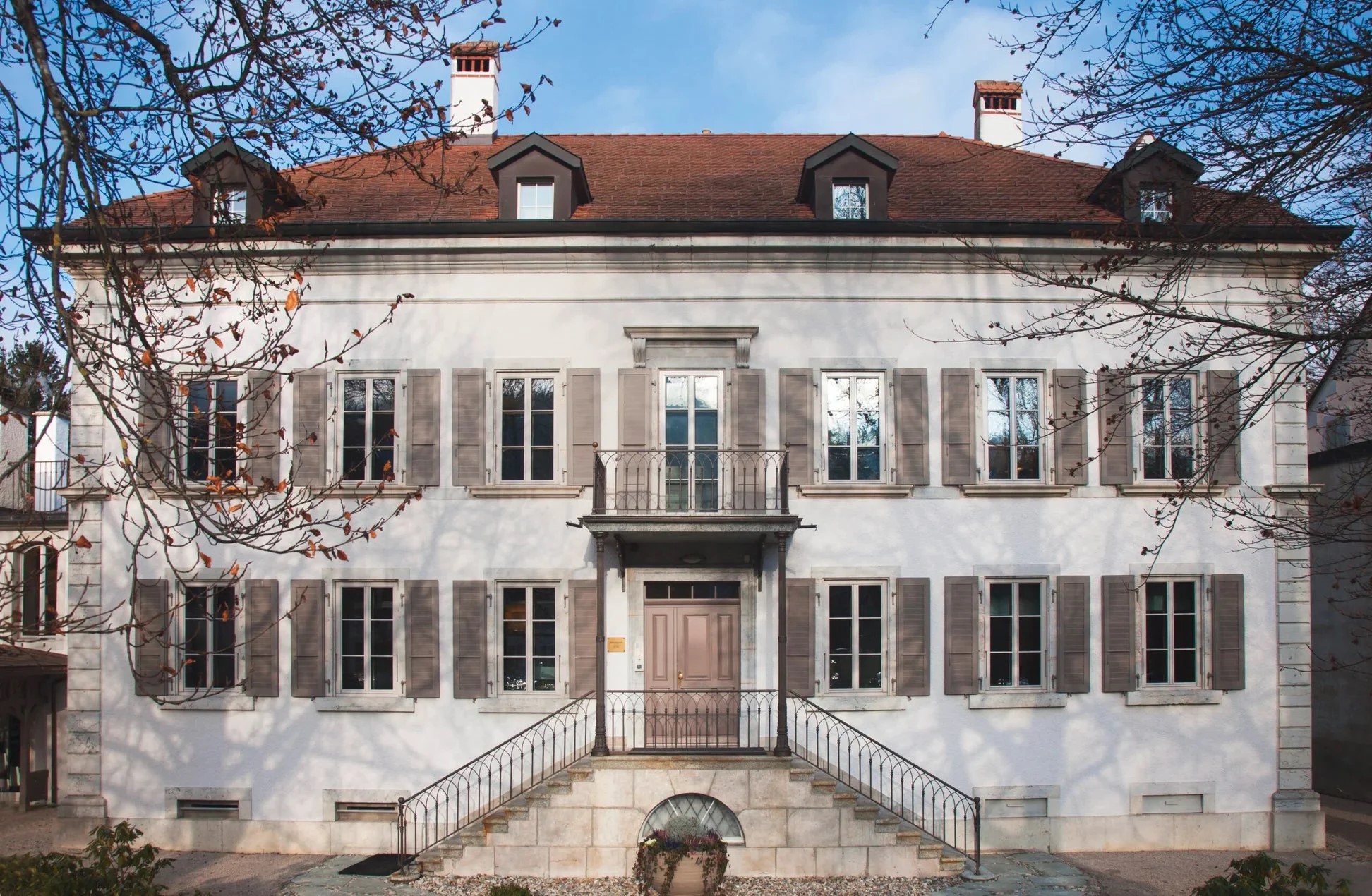
Flashback to the acquisition of Parmigiani Mesure et Art du Temps by the Sandoz Family Foundation in 1995. Fostering the strong ties that united the Sandoz family and Michel Parmigiani, the Parmigiani Fleurier brand was officially launched in 1996 with a collection of 52 references combining straightforward and complicated timepieces. The Toric QP Rétrograde, the first wristwatch from the Parmigiani Fleurier brand, debuted in 1996, establishing the gadroons and detailed knurling on the case as one of the house’s aesthetic signatures. It was preceded by the first manufacture movement, Calibre PF110, powering the Ionica Hebdomadaire, a sensation at the time since it had a power reserve of 8 days! The Kalpa Hebdomadaire, with its rectangular case, was launched the same year. Its volumes and proportions were based on the golden ratio, which inspired all the brand’s subsequent creations.
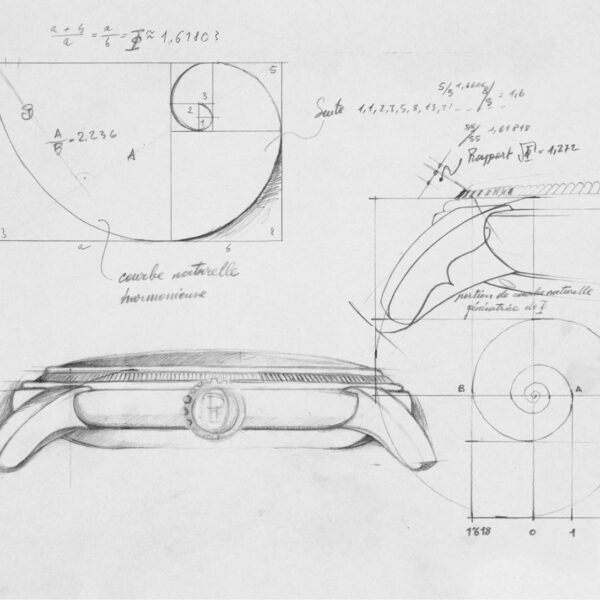
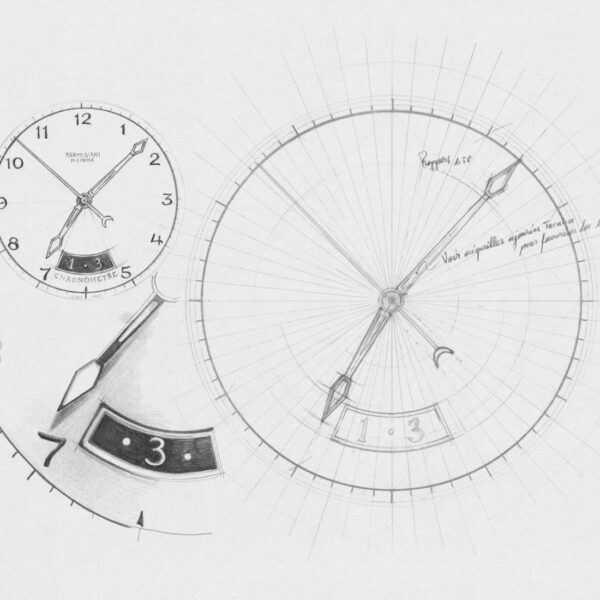
The brand’s debut did not stop Michel Parmigiani’s activity in the restoration workshop for third-party brands. In fact, a specialised workshop dedicated to unique pieces materialised. In 1998, he created a six-sided table clock for Piaget, followed by a perfume gun in 1999, a unique creation produced in two copies for the Sultanate of Oman. “The perfume gun, in addition to its complex mechanics which sprays tiny drops of fragrance, was beautifully hand-engraved and decorated with enamel.”
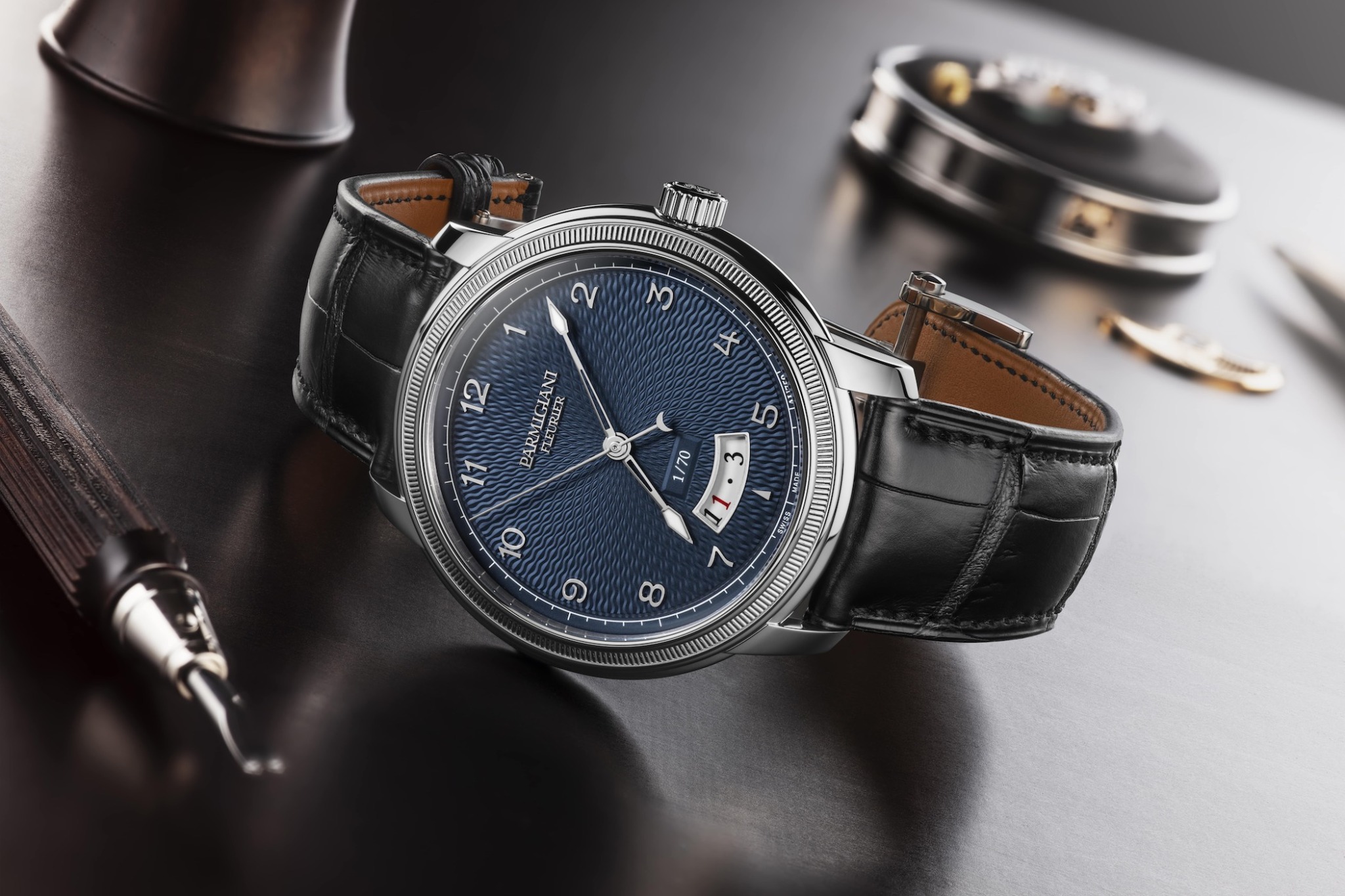
This creation was not the only one in Michel Parmigiani’s prolific output. In addition to pocket and bracelet watches, he has created several large, unique pieces such as Hippologia, the Dragon and the Pearl of Wisdom, and the Sun of Gaïa clock. He is undoubtedly a rarity in the business, capable of producing wristwatches and extraordinary table clocks alike. (see below)
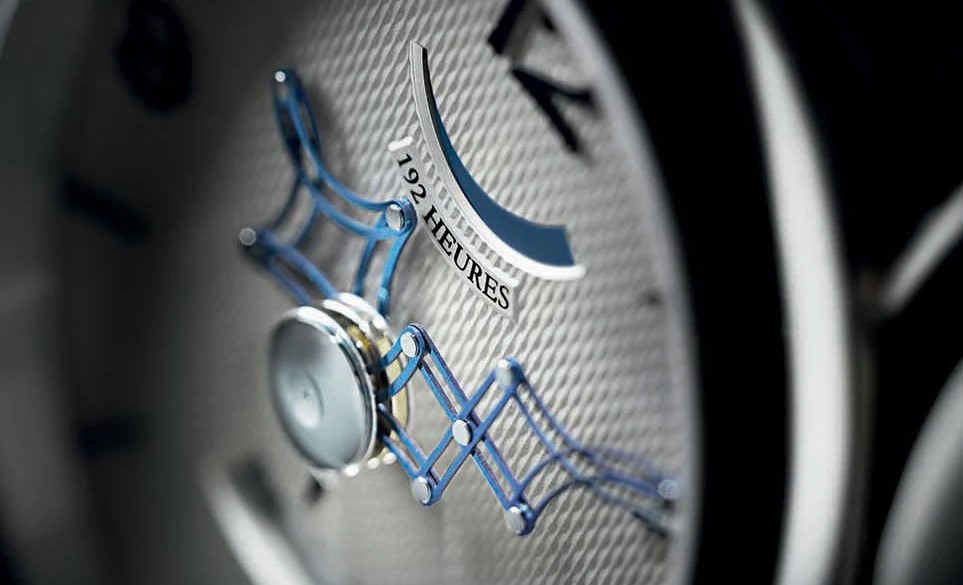
Michel Parmigiani’s research prompted the development of increasingly complicated and innovative calibres for the collections of his eponymous brand, like this 30-second tourbillon with an 8-day power reserve but with a seconds hand in the centre. It performs a rapid rotation of 30 seconds for the tourbillon but one minute for the hand! Or the Oval Pantograph, inspired by a pocket watch restored by Parmigiani Fleurier. The Ovale Pantograph, introduced in 2011, was the first Parmigiani Fleurier watch with telescopic hands.
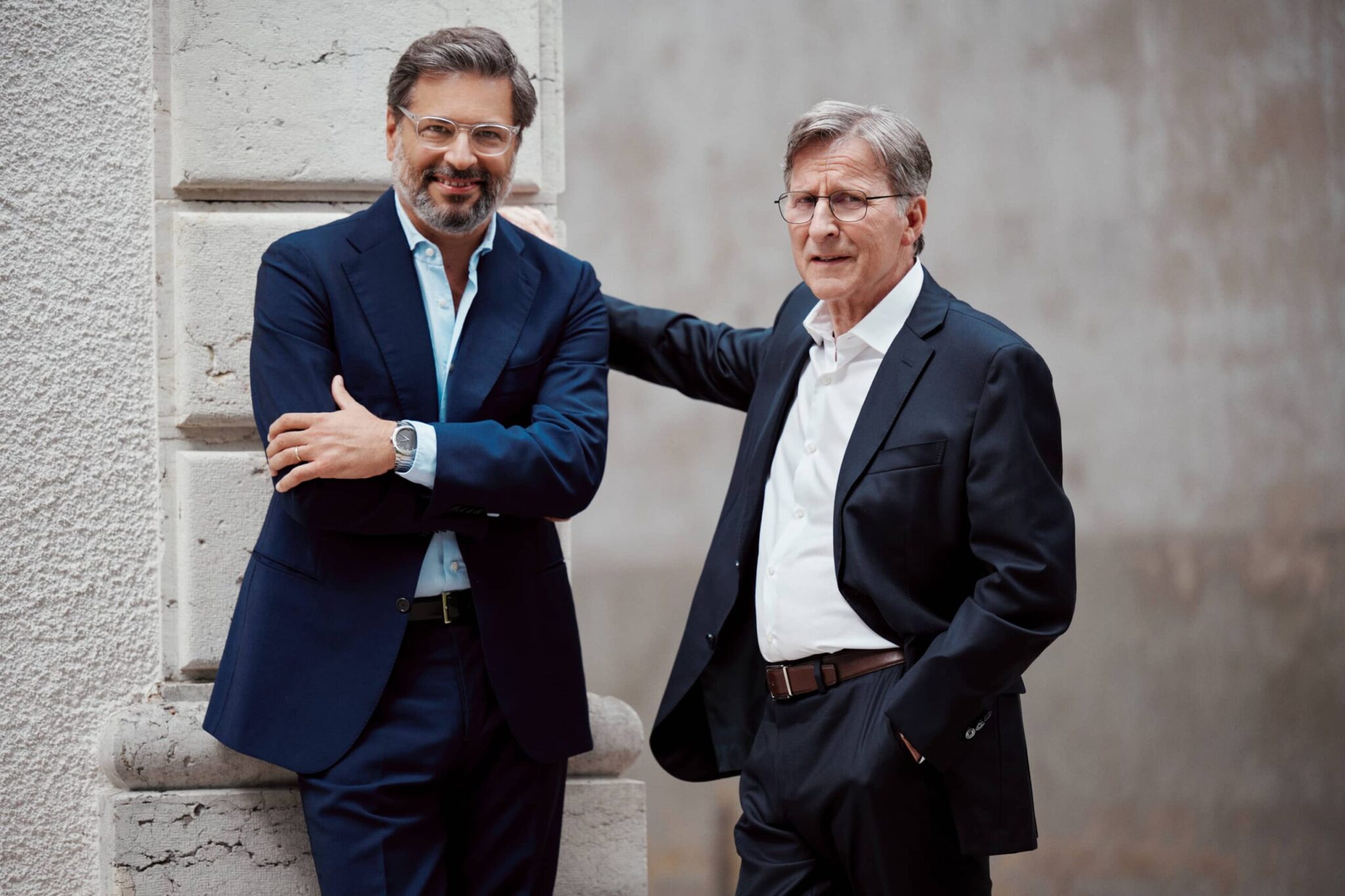
Some of his past creations are still alive today, subtly updated according to the brand’s new identity following Guido Terreni’s appointment as CEO. Among these is the Tonda Chronor Anniversaire, an integrated chronograph launched for the 20th anniversary of the Maison. This split-seconds chronograph is equipped with a high-frequency movement beating at 36,000vph / 5Hz with a double column wheel and vertical clutch. “Developing and executing a movement like this is much more complicated than a tourbillon.” The model is still in the catalogue, an exceptional piece in terms of its complexity and the 18-carat gold bridges and plates of the movement.
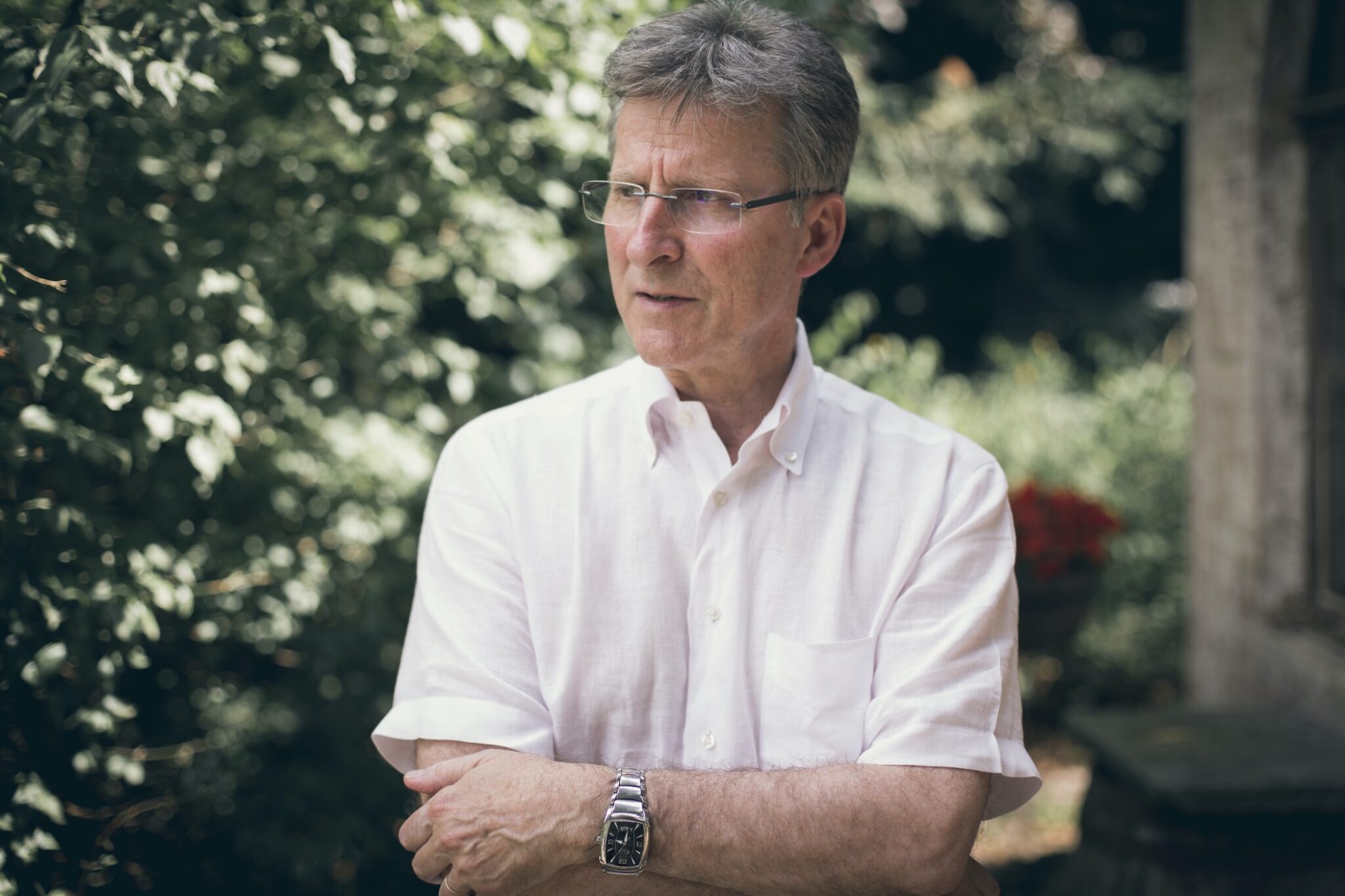
These are just a few innovative watchmaking creations from his rich repertoire. Guido Terreni has ensured that the founding values of the master watchmaker continue to permeate the contemporary collections. Michel Parmigiani is never short of ideas and continues to be a source of inspiration for the most recent innovations, always respecting the values which have guided his trajectory: technical excellence, innovation, respect for artistic crafts and a good dose of curiosity.
EXCEPTIONAL PIECES
The Hijri Calendar Table Clock: A World First
This unique and exceptionally complicated clock captures the idiosyncrasies of the Islamic lunar calendar. It counts down time on a periodic lunar cycle of 30 years, alternating the 19 common years with the 11 abundant years. A world first, the complex mechanics of the Hijri table were miniaturised to fit inside the Hijri Perpetual Calendar wristwatch.
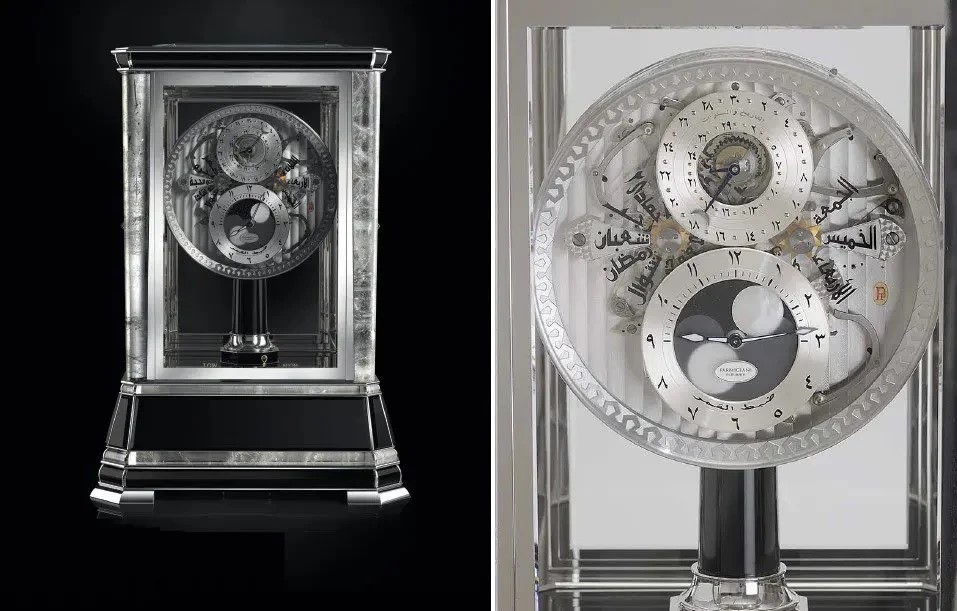
The Dragon and the Pearl of Wisdom: Bringing a Creation Myth to Life
For the Chinese Year of the Water Dragon in 2012, the Maison unveiled the Dragon and the Pearl of Wisdom clock, a horological homage to the legendary Chinese myth of the carp that becomes a dragon. The gold body of the dragon decorated with jade scales chases the gem-set pearl of wisdom, performing a rotation once an hour. An extraordinary example of gem-setting, goldsmithing and clockmaking, the Dragon and the Pearl of Wisdom is a unique piece.
The Gaïa Sun Clock: A Fusion of Excellent Craftsmanship
In 2015, Parmigiani Fleurier and Lalique joined forces to create the Gaïa Sun Clock, a fusion of Haute Horlogerie, jewellery know-how and Lalique crystal. Inspired by René Lalique’s original Day and Night clock of 1926, the clock has a Lalique crystal casing and a Parmigiani Fleurier in-house movement and dial.
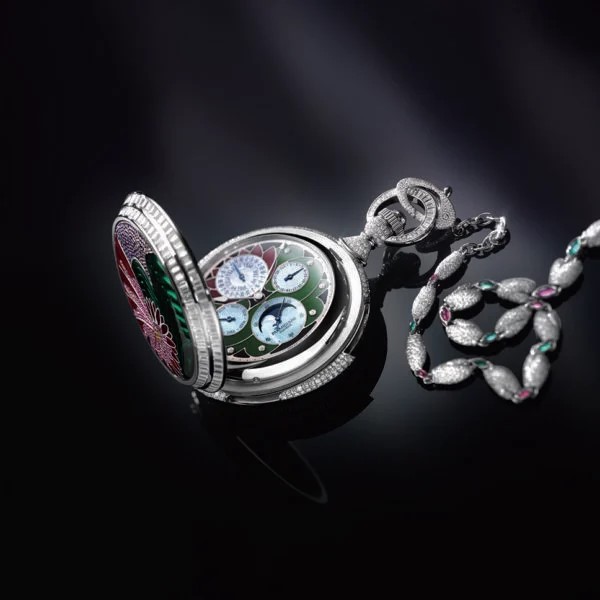
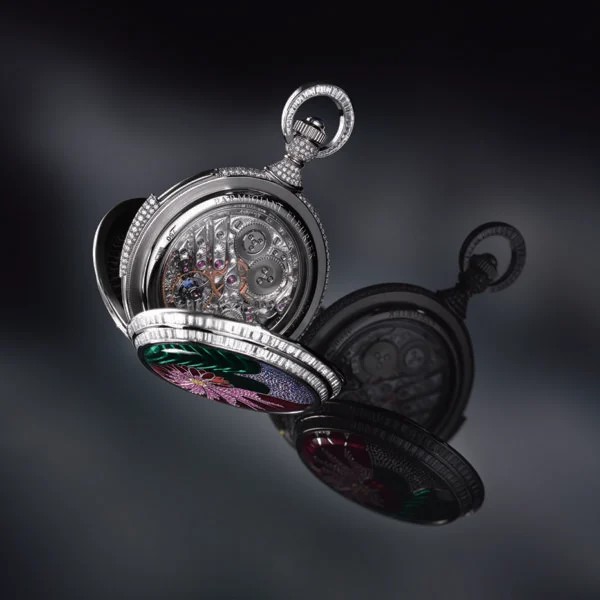
The Fibonacci Pocket Watch: Inspired by the Golden Ratio
The Fibonacci pocket watch celebrates artistic excellence and technical performance while highlighting the harmony of nature. Its aesthetics and mechanism pay homage to the craftsmanship and art of the Gaïa Sun Clock.
Hippologia: The Pinnacle of Artistic Craftsmanship
A masterpiece combining two automata horses galloping around a Lalique crystal base, the Hippologia table clock was inspired by the Latin expression “tempus fugit”. Representing a mare and her foal, the automata embodies the concept of taming time to better appreciate its value.
